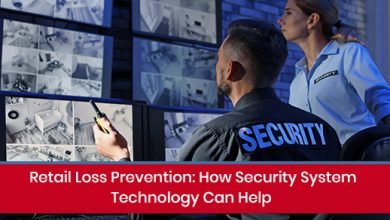How Can Instructional Technology Improve the Learning Process?

It was nearly a century ago that an overhead projector was used to showcase images in a classroom. A few decades after that, Texas Instruments devised the handheld calculator. Then, in the 1980s, several schools introduced the Apple Macintosh computers in classrooms.
Currently, technology has become prevalent in schools. Access to computers has become widespread and it is slowly replacing pens and papers in classrooms. For instance, you can learn English online without having to write anything down. Education experts have stated that technology is capable of creating profound changes in the teaching and learning process.
For instance, technology can create opportunities for extraordinary collaboration, engagement, and support. However, it is critical to know how to apply the technology effectively.
What Is Instructional Technology?
In simple terms, it is the theory and practice of applying technology in education. It usually comprises the following phases:
- Design
- Development
- Use
- Management
- Evaluation
Forms of Instructional Technology
Instructional technology can take many different forms. For instance, electronic whiteboards, online courses, and virtual reality classes are all considered as instructional technology.
Even though the benefits and applications of instructional technology are countless, the primary purpose is to make the learning experience more engaging and effective.
Benefits of Instructional Technology
Education experts have agreed that instructional technology comes with many benefits to the education process. Some benefits of instructional education include:
- Improved access to information.
- Offers more opportunities for collaboration and communication.
- It also enables the education system to meet the needs of diverse learners.
- It makes the learning process more engaging, making it more effective.
- Instructional technology also breaks geographical barriers to the learning process. For example, you can find your English tutor online without leaving your home.
- It also improves the overall learning process making it more adaptable to the learner’s needs.
Application Of Technology In Modern-Day Classrooms
Education institutions can apply instructional technology in different ways to enhance the teaching and learning processes. Although the applications are many, here are the most notable ones:
Online Learning and Virtual Classrooms
Online learning has revolutionized the education system. It has levelled the playing field by availing students of the time and resources they need to develop the required skills. For example, if you want to speak English fluently, you can find online courses that can help you achieve that.
Additionally, if you did not understand a particular lecture, you can listen to it again. Besides that, online learning also offers learners access to a wide range of topics allowing them to enrich their education by taking courses not offered in their schools.
Virtual classrooms can be applied at every level of education. Teachers in traditional classrooms have to tailor their lesson plans to suit the average learner. This approach is disadvantageous to fast learners, as they have to go with the teacher’s pace.
However, virtual classrooms allow the teacher to approach lessons at the individual level. Here, students get a more personalized learning environment tailored to their needs.
Collaborative Learning
Instructional technology offers numerous collaborative learning opportunities. With technological advances, it is easier to share information.
Nowadays, educational institutions have access to digital tools that allow their students to work collaboratively outside the classroom. This enables learners to share ideas and work on complementing projects remotely. As a result, it eliminates the restrictions of physical classrooms like classroom hours or geographical location.
Moreover, learners can collaborate with teachers more effectively. The digital tools make it effortless for learners to collaborate with teachers and ask questions even after the traditional classroom hours.
Real-Time Feedback
Feedback is a critical element in any education process. Instructional technology makes it effortless for educators to gather information and provide feedback compared with the traditional methods.
For example, a teacher can use an online survey to gauge their students’ understanding of a particular topic. This makes it easy for them to identify the areas they should focus on in that lesson. Moreover, they can use digital education tools to provide their students with immediate feedback on their homework.
Challenges Facing Instructional Technology
Despite having numerous benefits to the education process, instructional technology is not fully implemented in many parts of the world. The slow implementation has been due to various challenges facing the adoption and use of technology in education.
Some notable challenges include:
- Lack of professional training – there is a need for teachers and learners to be trained on the new and advanced instructional technologies.
- Budget limitations – this is perhaps the biggest challenge to the adoption of instructional technology in learning institutions. This is a tough limitation to overcome because digital learning tools don’t come cheaply.
- Poor network infrastructure – studies have shown that some schools have computers but cannot fully utilize them because they don’t have a reliable internet connection. There is a need for a robust network infrastructure for instructional technology to be fully implemented.
- Resistance to change – studies have shown that many teachers are not willing to change. Some have demonstrated an unwillingness to adopt technology in their classrooms.
Bottom Line
Implementation of instructional technology is costly. However, if learning institutions take the right approach, it is manageable. For instance, a school can develop a strategic plan and take a long–term approach that allows them to implement it in phases.




